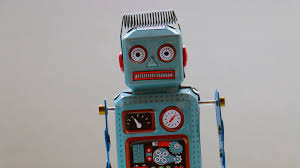Source: towardsdatascience.com
The following is based on my observations of machine learning teams — not an academic survey of the industry. For context, I’m a contributor to Cortex, an open source platform for deploying models in production.
This March, Starsky Robotics—the popular autonomous trucking startup—announced they would be shutting down. In his post-mortem, founder Stefan Seltz-Axmacher explained that the company’s biggest problem was “that supervised machine learning doesn’t live up to the hype.”
As he explains, modern machine learning “isn’t actual artificial intelligence akin to C-3PO, it’s a sophisticated pattern-matching tool… The consensus has become that we’re at least 10 years away from self-driving cars.”
Seltz-Axmacher’s observations echo what many critics have been saying for years, that our sc-ifi fantasies of artificial general intelligence are, optimistically, decades away.
However, embedded in Seltz-Axmacher’s opinion is a nuance that many critics miss:
Yes, Skynet isn’t coming anytime soon, but as a mere “sophisticated pattern matching tool,” machine learning is still revolutionizing software—it just doesn’t look like cyborgs.
Machine learning means better software, not Skynet
Critics of the AI hype bubble frequently point at the number of projects that have yet to deliver on their promises. Where are the self-driving cars, or the autonomous factories? When is OpenAI going to deliver artificial general intelligence?
What critics miss, however, is that the companies working on these projects represent a small, extremely ambitious sliver of the machine learning ecosystem.
The majority of production machine learning projects, in reality, are focused on features that make software more responsive, precise, and personalized.
For example, looking at Apple’s top 10 most downloaded free iPhone apps, all of them leverage machine learning:
- Netflix, TikTok, YouTube, Instagram, Facebook, Amazon, and Snapchat all use recommendation engines.
- Messenger and Gmail use natural language processing to write messages for you, like in Gmail’s Smart Compose and Messenger’s chatbots.
These aren’t examples of artificial general intelligence, but they are the flagship products of the most valuable companies in the world, and they all rely on state-of-the-art machine learning. We are a ways away from Westworld-esque artificial intelligence, but a world in which machine learning dominates software is not science fiction—it’s the nature of our reality.
Machine learning isn’t entering a winter—it’s growing, and fast
Looking at the penetration of machine learning into software, one thing sticks out: It seems like only tech giants are using it.
For years, this has been the case. Machine learning has been confined to the companies that could afford it—companies that had access to troves of data, PhD researchers, and dedicated ML infrastructure teams.
Finally, things are changing. The bottlenecks that previously restricted machine learning to the FAANG-crowd are being removed. For example:
- Advances in transfer learning have enabled startups to train models with small amounts of data.
- Improvements in machine learning frameworks—PyTorch, TensorFlow, fastai, etc.—have made machine learning approachable to engineers.
- Open source tools like Cortex (full disclosure: I work there) have made it so that small teams can deploy models without a dedicated ML infra team.
And removing these hurdles has lead to a new wave of popular ML-powered projects built by small teams:
- A few months ago, AI Dungeon—an AI-powered choose-your-own-adventure text game—went viral for its state-of-the-art results, despite being built by a team of two in their spare time.
- Ezra, a small seed stage company, has brought to market a product that uses machine learning to screen for the most common cancers in men and women.
- Glisten.ai, with a team of two, has built a product that uses NLP and computer vision to parse and catalogue retail product information from simple product images.
These aren’t promising research experiments waiting on funding, these are real startups whose products have actual users—and there are many more like them.
Critics are right that the road from where we are now to AGI is long, but they are wrong in assuming it is desolate. Machine learning is already revolutionizing software, it just doesn’t look like the movies.
